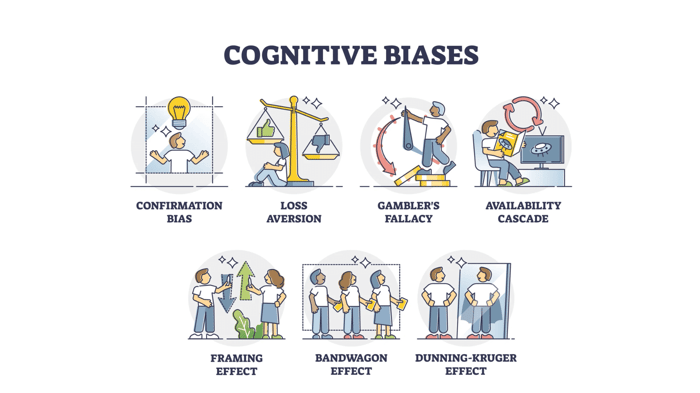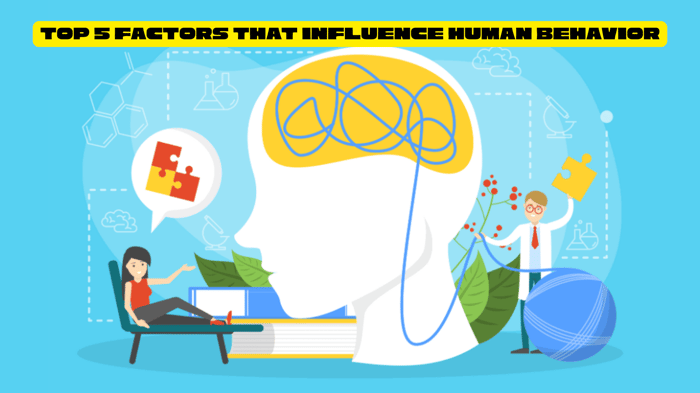Every day, we are faced with decisions, big and small, but our choices are often not as rational as we might think. Our minds rely on cognitive biases—mental shortcuts that help us process information quickly—but these biases can sometimes lead us to make flawed judgments. These biases are inherent in human nature and shape how we interpret the world around us, influencing our thoughts, perceptions, and actions. Whether we are evaluating a product, making a financial investment, or even choosing a vacation destination, cognitive biases can have a profound impact on our decision-making.
In this blog post, we’ll explore some of the top cognitive biases that affect our decisions and how they might lead us to make choices that are not always in our best interest.
1. Confirmation Bias
What is it?
Confirmation bias occurs when we seek out, interpret, or remember information that confirms our pre-existing beliefs, while ignoring or undervaluing evidence that contradicts them.
How it affects us:
This bias can lead to a narrow view of the world. For instance, when you believe a certain political ideology, you might only read articles or watch videos that support your viewpoint, reinforcing your belief while ignoring contradictory opinions.
How to overcome it:
To combat confirmation bias, actively seek out diverse perspectives and challenge your assumptions. Try to engage with information that you find uncomfortable or contradictory to your own beliefs.
2. Anchoring Bias
What is it?
Anchoring bias occurs when we rely too heavily on the first piece of information we receive (the "anchor") when making decisions, even if it's irrelevant or misleading.
How it affects us:
For example, if you’re shopping for a car and the first price you see is $30,000, you might perceive a car priced at $25,000 as a great deal, even though it may still be overpriced. The initial anchor price skews your perception of value.
How to overcome it:
Be aware of the first piece of information you encounter and try to view subsequent information more objectively. Re-evaluate decisions with fresh perspectives to avoid being influenced by the anchor.
3. Availability Heuristic
What is it?
The availability heuristic refers to our tendency to make judgments about the likelihood of events based on how easily examples come to mind, often influenced by recent experiences or media exposure.
How it affects us:
After hearing about a plane crash on the news, you might overestimate the risk of flying and become anxious about your next flight, even though air travel is statistically safer than driving.
How to overcome it:
Rely on data and statistics rather than personal anecdotes or recent media stories. Try to balance your judgments with a more complete view of the situation.
4. Overconfidence Bias
What is it?
Overconfidence bias occurs when we overestimate our own abilities, knowledge, or the accuracy of our judgments. People with this bias often believe they are less likely to make mistakes than they actually are.
How it affects us:
In decision-making, overconfidence can lead to risky behavior, such as investing in stocks without sufficient research or making decisions in the workplace without considering all potential outcomes.
How to overcome it:
Regularly evaluate your assumptions and ask for feedback from others. Cultivating humility and being open to the possibility that you may be wrong can help mitigate overconfidence.
5. Loss Aversion
What is it?
Loss aversion is the tendency to prefer avoiding losses rather than acquiring equivalent gains. Research suggests that the pain of losing is psychologically about twice as powerful as the pleasure of gaining.
How it affects us:
This bias can lead to poor decision-making, such as holding onto losing investments for too long or avoiding a new opportunity because of the fear of failure, even if the potential rewards outweigh the risks.
How to overcome it:
Try to frame decisions in terms of potential gains rather than losses. Taking a step back to evaluate the long-term benefits can help you move past the fear of loss.
6. Hindsight Bias
What is it?
Hindsight bias occurs when we perceive events as having been more predictable after they have already occurred. We tend to believe that we "knew it all along," even though we didn't at the time.
How it affects us:
This bias can impact decision-making by leading us to be overly confident in our ability to predict future outcomes, even when we lacked the information to make an informed judgment.
How to overcome it:
When reflecting on past decisions, be mindful of how you perceive the outcome. Consider the uncertainties and information available at the time of the decision rather than judging it from a present-day perspective.
7. Status Quo Bias
What is it?
Status quo bias is the tendency to prefer things to remain the same rather than change, even when a new option may offer better outcomes. It's the idea that the current state of affairs feels safer and more comfortable, even if it's suboptimal.
How it affects us:
People often stick with familiar routines or make conservative choices simply because it feels easier or safer, rather than exploring new possibilities that could lead to better results.
How to overcome it:
Challenge yourself to embrace change and look for opportunities to improve. Regularly reassess your decisions and seek innovative solutions to avoid falling into the comfort zone of the status quo.
8. Framing Effect
What is it?
The framing effect occurs when the way information is presented (or "framed") influences our decision-making. The same information can lead to different decisions depending on whether it is framed positively or negatively.
How it affects us:
For example, if a doctor tells a patient that a treatment has a "90% success rate," the patient is more likely to opt for it than if the doctor says it has a "10% failure rate," even though both statements are the same.
How to overcome it:
Try to consider all the different ways a decision could be framed. Focus on the actual data and outcomes rather than the emotional appeal of the way it's presented.
9. Attribution Bias
What is it?
Attribution bias refers to the way we explain the causes of our own and others' behaviors. People tend to attribute their successes to internal factors (like skill) and their failures to external factors (like luck or the environment), while doing the opposite for others.
How it affects us:
This bias can create misunderstandings in social and workplace settings. For example, if someone fails a test, we might attribute it to their lack of effort, but when we fail, we blame the difficulty of the test.
How to overcome it:
Cultivate empathy and try to understand the broader context of others' actions. Being aware of how we make judgments can lead to fairer and more objective conclusions.
Final Thoughts
Cognitive biases are an inherent part of how we process information and make decisions. While these biases can help us make quick decisions, they can also lead to errors in judgment that affect our choices in daily life, from relationships to career decisions.
Being aware of these top cognitive biases and how they shape our thinking can help us make more rational, informed decisions. By challenging our assumptions, seeking diverse perspectives, and approaching decisions with an open mind, we can reduce the impact of cognitive biases and improve the quality of our decision-making.




